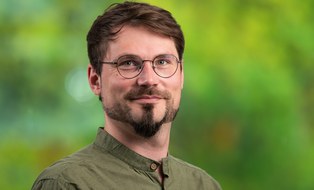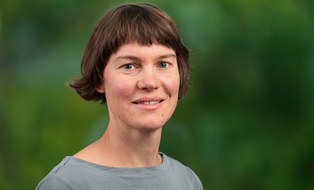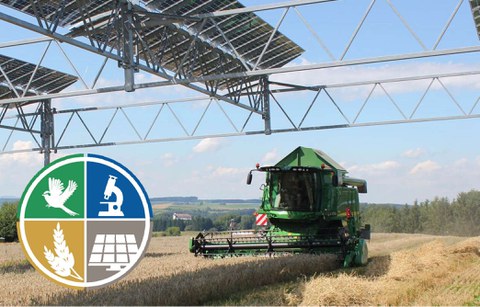Agri-PV
Investigation and evaluation of agri-PV systems
Client:
Federal Agency for Nature Conservation (BfN)
Duration:
11/2024 - 08/2028
Project team:
- TU Dresden (Prof. Dr. C. Schmidt, Dr. A. Seidel, P. Herrmann, A. Zürn)
- Professor-Hellriegel-Institut e.V. at the Anhalt University of Applied Sciences (Prof. Dr. M. Pietsch, S. Fritzsch)
- Bosch & Partner Hanover (Dr. D. Günnewig, E. Johannwerner)
- Fraunhofer ISE Freiburg (Dr. M. Trommsdorff, C. Schill, L. Bunge)
- Prof. Dr. M. Reinke (Weihenstephan-Triesdorf University of Applied Sciences)
Project description
The background to the research project is that in the next few years, in order to meet the legally defined energy and climate protection targets, an increased expansion of renewable energies must take place, in the context of which new forms of energy generation such as agri-PV systems also play a role. However, their effects on nature and the landscape have not yet been systematically researched over a longer period of time. This is where the research project comes in.
According to DIN SPEC 91434, agri-PV systems are generally understood to be the combined use of one and the same area of land for agricultural production as the main use and electricity production by means of a PV system as a secondary use, whereby agricultural production can include arable land, permanent grassland, permanent pasture land or permanent crops. Since the construction of agri-PV systems as "special solar systems" according to §§ 37 (1) No. 3 and 48 (1) No. 5 EEG is eligible for funding on arable land as well as on land with permanent crops and on permanent grassland (provided they are not located on peatland or within nature reserves, national parks or Natura 2000 areas with habitat types according to Annex I of the Habitats Directive), all three forms of agricultural use are in principle relevant for the study design. In accordance with DIN SPEC 91434, a distinction is also made between two types of agri-PV systems, which are also relevant for the research project: Low elevated systems, which can be elevated vertically or horizontally, or high elevated systems, which are always aligned horizontally. While the latter can be cultivated under the PV systems by means of an elevation with a clear height of at least 2.10 m, vertical systems (with an elevation of at least 0.8 m) are cultivated between the rows of modules.
The PV systems and forms of agricultural use result in at least six basic combinations (arable land/ high-mounted, arable land/ close to the ground, permanent crops/ high-mounted, permanent crops/ close to the ground, grassland/ high-mounted, grassland/ close to the ground), which will inevitably have very different effects on nature and the landscape depending on their size and the respective landscape situation (lowland or hilly terrain, structuring and use of the surrounding landscape). These can be both positive and negative. It goes without saying that the types of agri-PV systems can be further differentiated, for example depending on soil quality or the type of crop grown, or in the case of low-mounted systems also between vertical and horizontal. They will be systematized as part of the research project in order to enable the research results to be classified.
In terms of content, the research project is fundamentally oriented towards the objectives of Section 1 of the Federal Nature Conservation Act (BNatSchG) and thus takes into account the effects on species, biotopes and biodiversity, as well as the effects on diversity, individual character and beauty and the recreational value of nature and landscape and the ecosystem (soil, climate, water). At the same time, flora and fauna as well as the landscape are the main focus of research interest.
Aims of the research project:
- Field research combined with GIS-based analyses & assessments: nature conservation investigation and assessment of the impact of agri-PV systems on nature and landscape, in particular flora, fauna and the landscape
- Presentation of ecological enhancement options, comparison of different combinations of plant type and agricultural use
- Recommendations for nature conservation-optimized crops and forms of cultivation as well as supplementary ecological measures, taking into account specific site conditions
Project team members:
 © Sven Ellger/TUD
© Sven Ellger/TUD
wissenschaftlicher Mitarbeiter
NameMr Philipp Herrmann M.Sc.
Send encrypted email via the SecureMail portal (for TUD external users only).
 © Sven Ellger
© Sven Ellger
wissenschaftliche Mitarbeiterin
NameMs Dr.-Ing. Andrea Seidel
Send encrypted email via the SecureMail portal (for TUD external users only).
 © Sven Ellger
© Sven Ellger
wissenschaftliche Mitarbeiterin
NameMs Amrei Zürn M. Sc.
Send encrypted email via the SecureMail portal (for TUD external users only).
